Flasks and Test Tubes
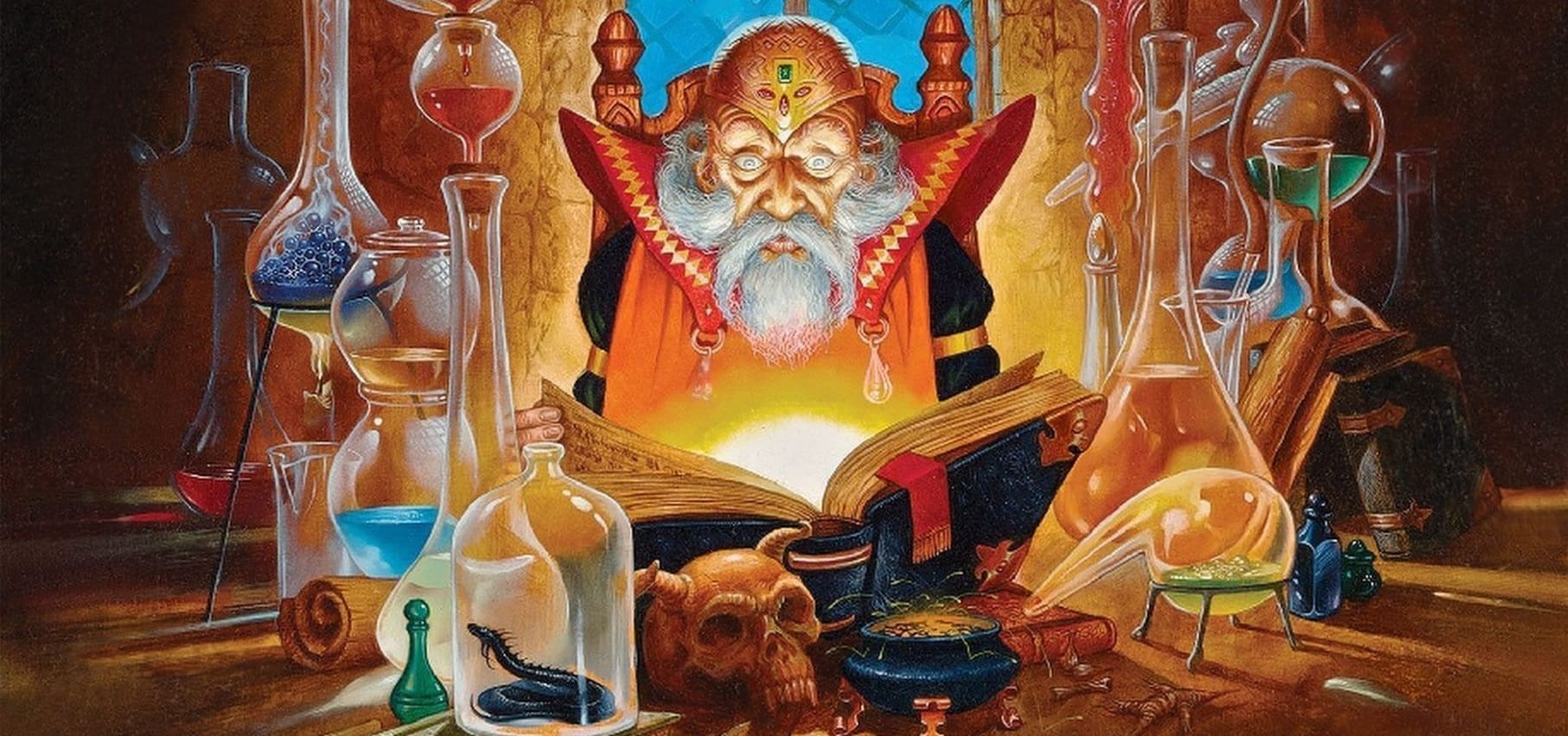
I was just on a Helmut Wenske kick the other day – he's a groovy German surrealist who did a lot of album covers in the 1970s – and this one got me thinking about the humble flask.
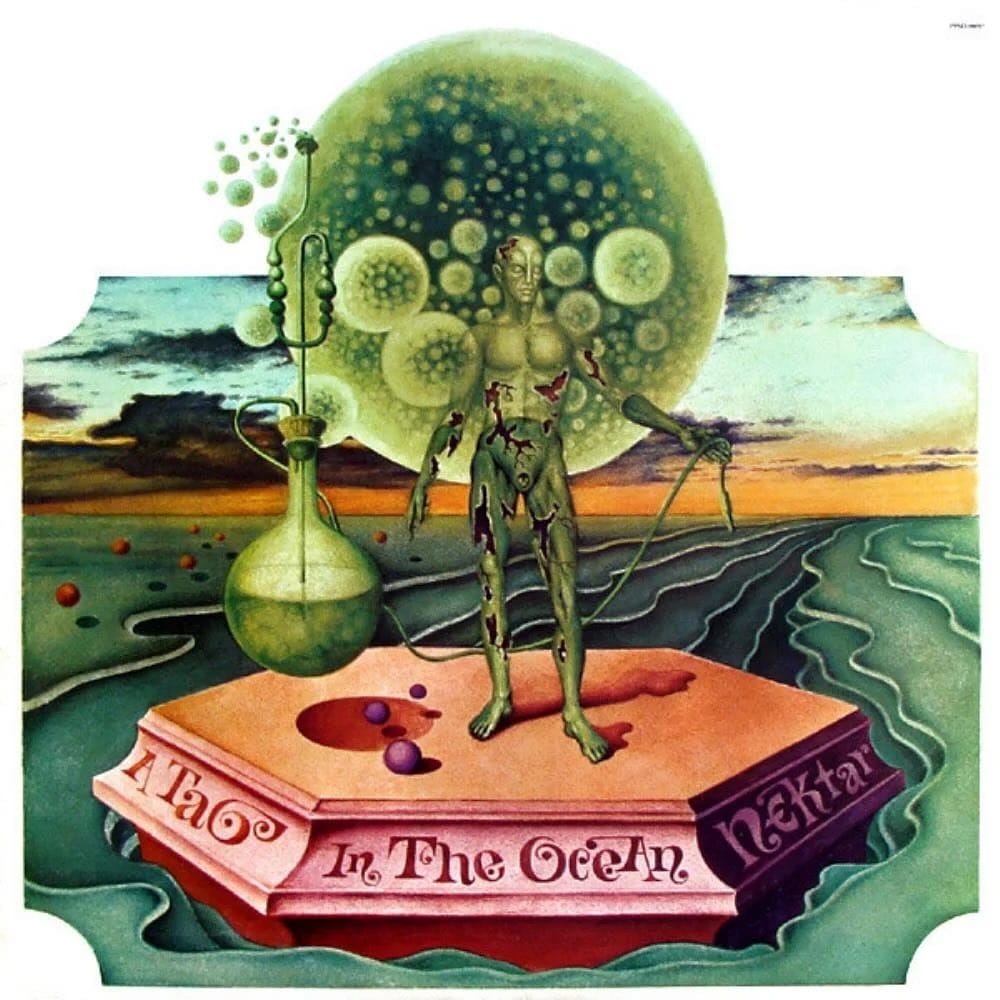
The "mad scientist" is among the once-popular science fiction tropes that you don't really see in a serious context any more. I think the role of "innovative cutting-edge hubris" has instead been filled by the computer scientist or the tech billionaire for a few decades now.
As a result, the odds and ends that used to signify a wacky scientist have fallen out of favor: The wild hair, rumpled lab coat, and twirly tubes of colorful liquid dripping in an inscrutible combination of flasks and test tubes.
This Mark Salwowski illustration even includes another one of the tropes you don't see any more: Wall-sized computers.
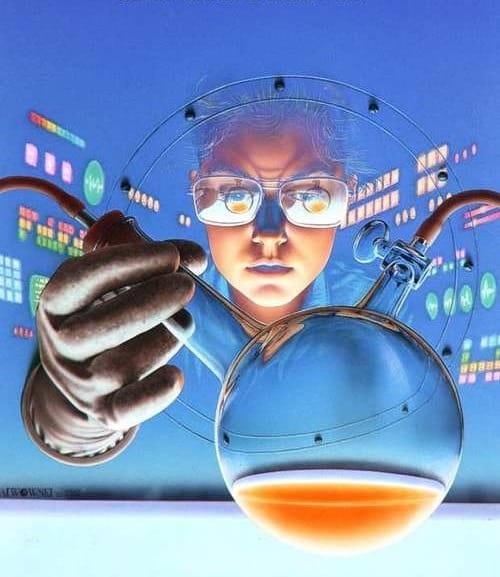
This Richard Powers illustration is a stylish example of the long-lost mad science vibe. It served as the cover to Doctor Solar #1, a 1962 Gold Key comic book that came with the very golden-age mad science subtitle "Man of the Atom."
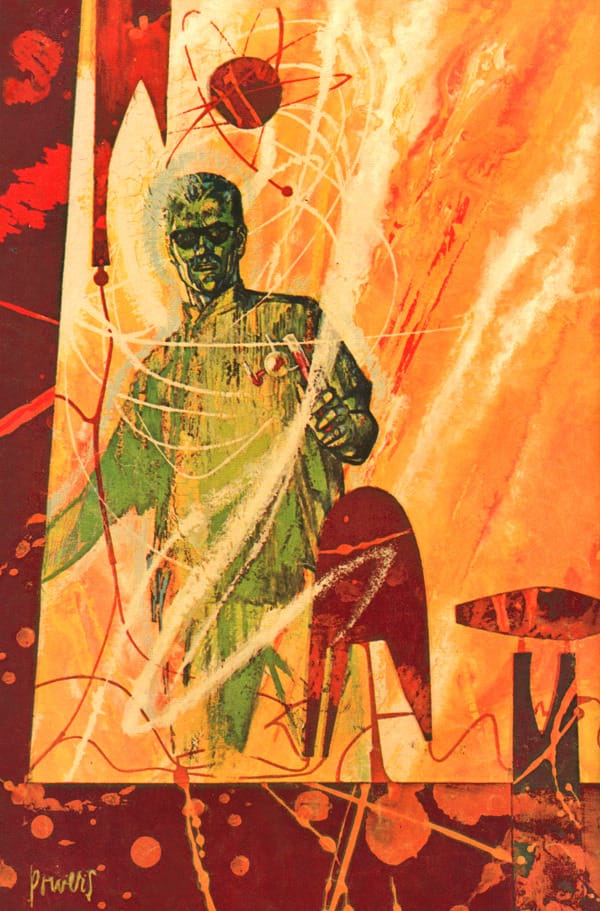
I'll take any excuse to post these two covers to James Blish's A Case of Conscience, even though the bottles on these covers are egg-incubators, not flasks. I think it's fun that both of these covers are by the same artist, Darrell K. Sweet, done 12 years apart.
Presumably, Ballantine decided it needed more colorful covers between 1975 and 1987.
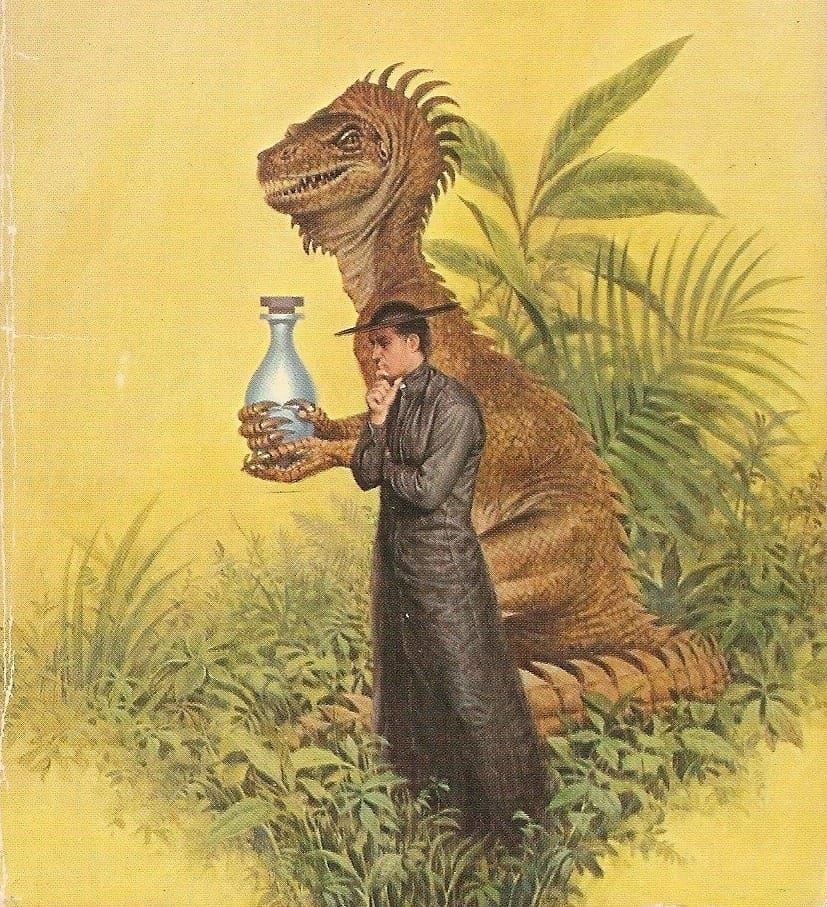

Flasks are a key way to keep the blood chugging through your apparently fully robotic veins, judging from Claude Lacroix’s arresting cover for “Fiction” magazine, December 1972.
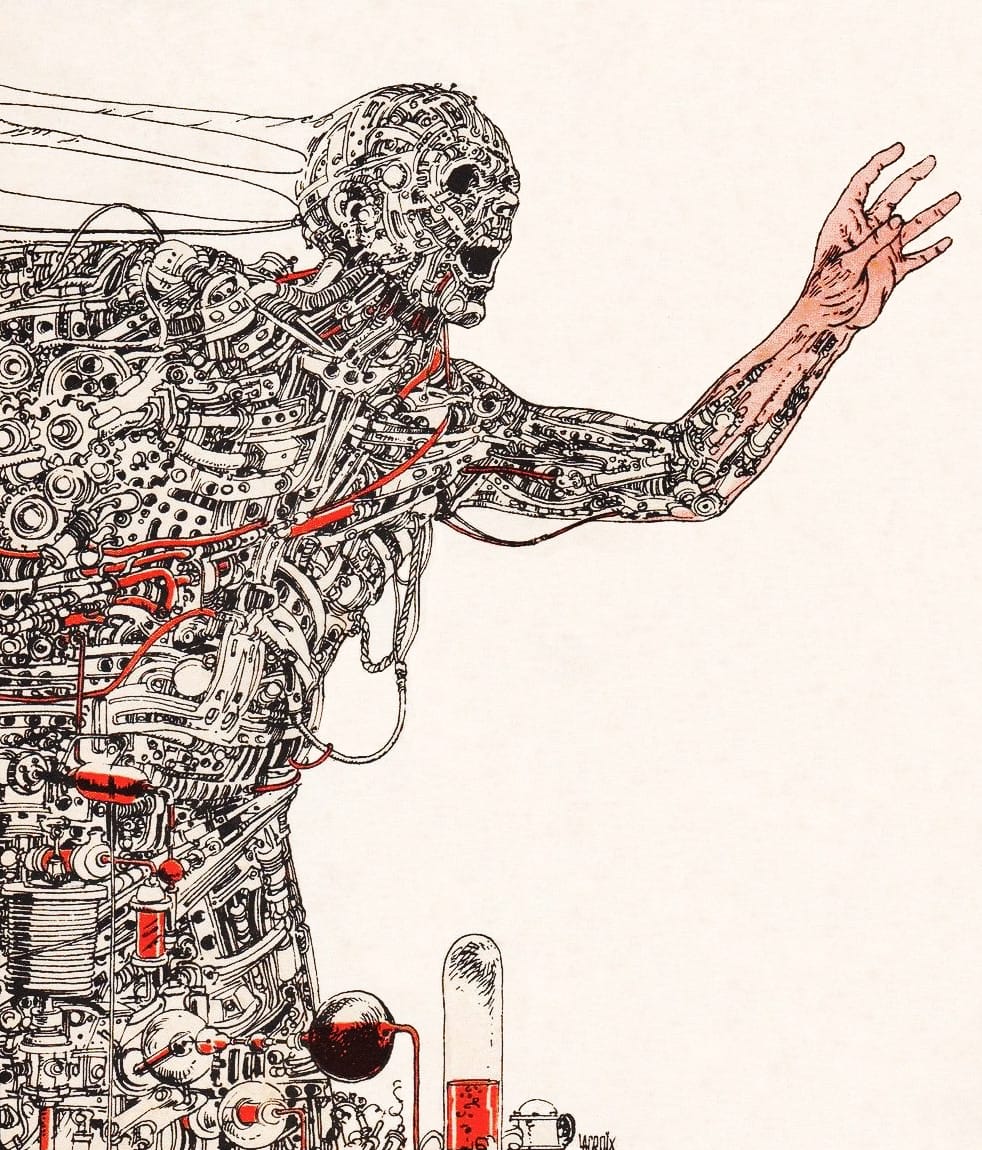
In fact, for surrealist cover artists, those curly tubes that fed into flasks also served as connective tissue in a metaphorical sense, not a literal one. Here's one example of chemistry tubes pulling together a collage of iconography in J. H. Breslow's 1973 cover to Larry Eisenberg's short story collection The Best Laid Schemes.
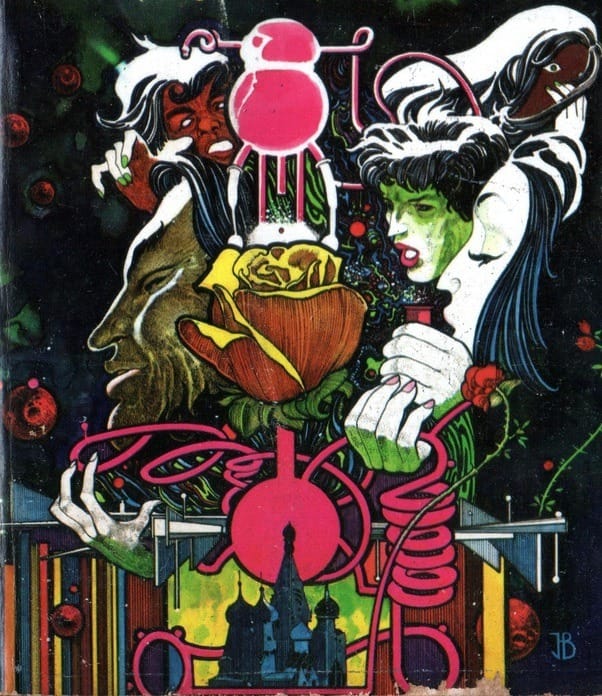
For David Plourde's 1972 cover to John Rackham's Earthstrings, a spherical round-bottom flask serves as the frame through which we see an entire city.
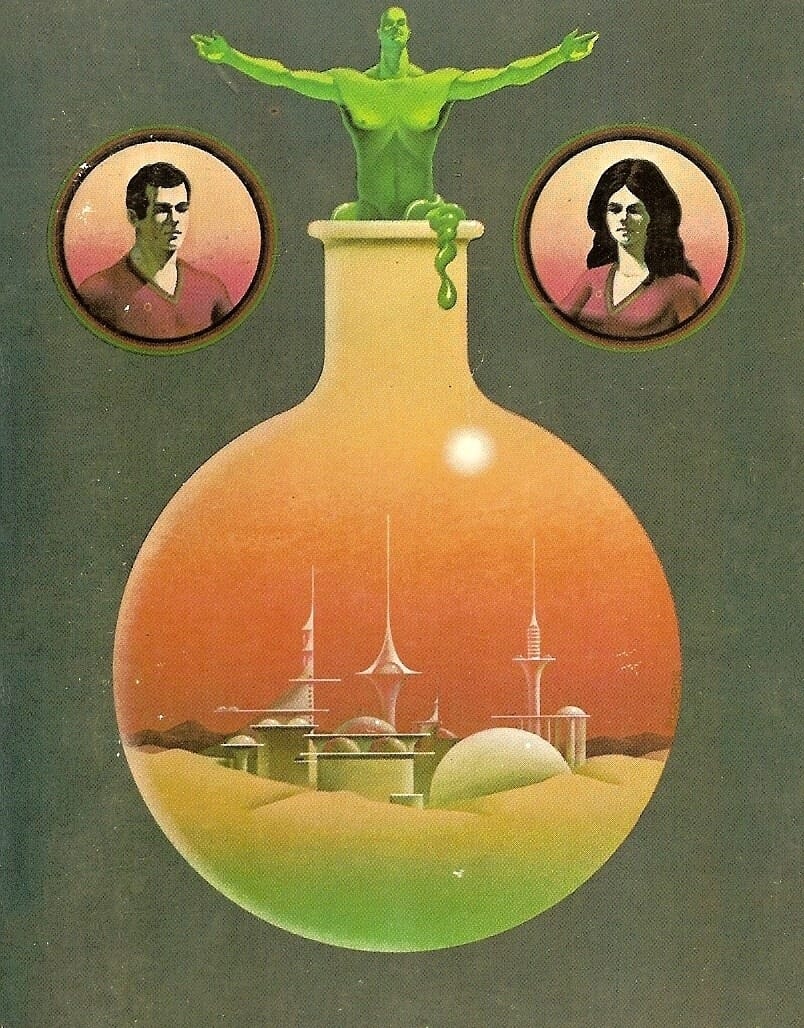
Don Ivan Punchatz's 1967 cover to the Groff Conklin-edited Great Science Fiction by Scientists anthology leans heavily into chemistry flasks to signal the true scientist at work.
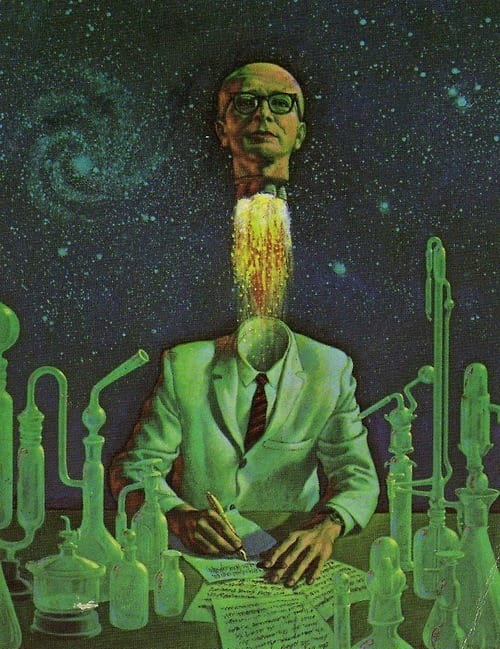
Isaac Asimov's 1976 collection of science essays, Please Explain, was another opportunity for a cover artist to showcase a flask as a proxy for the genuine science readers would find within. Here's John Berkey's cover.
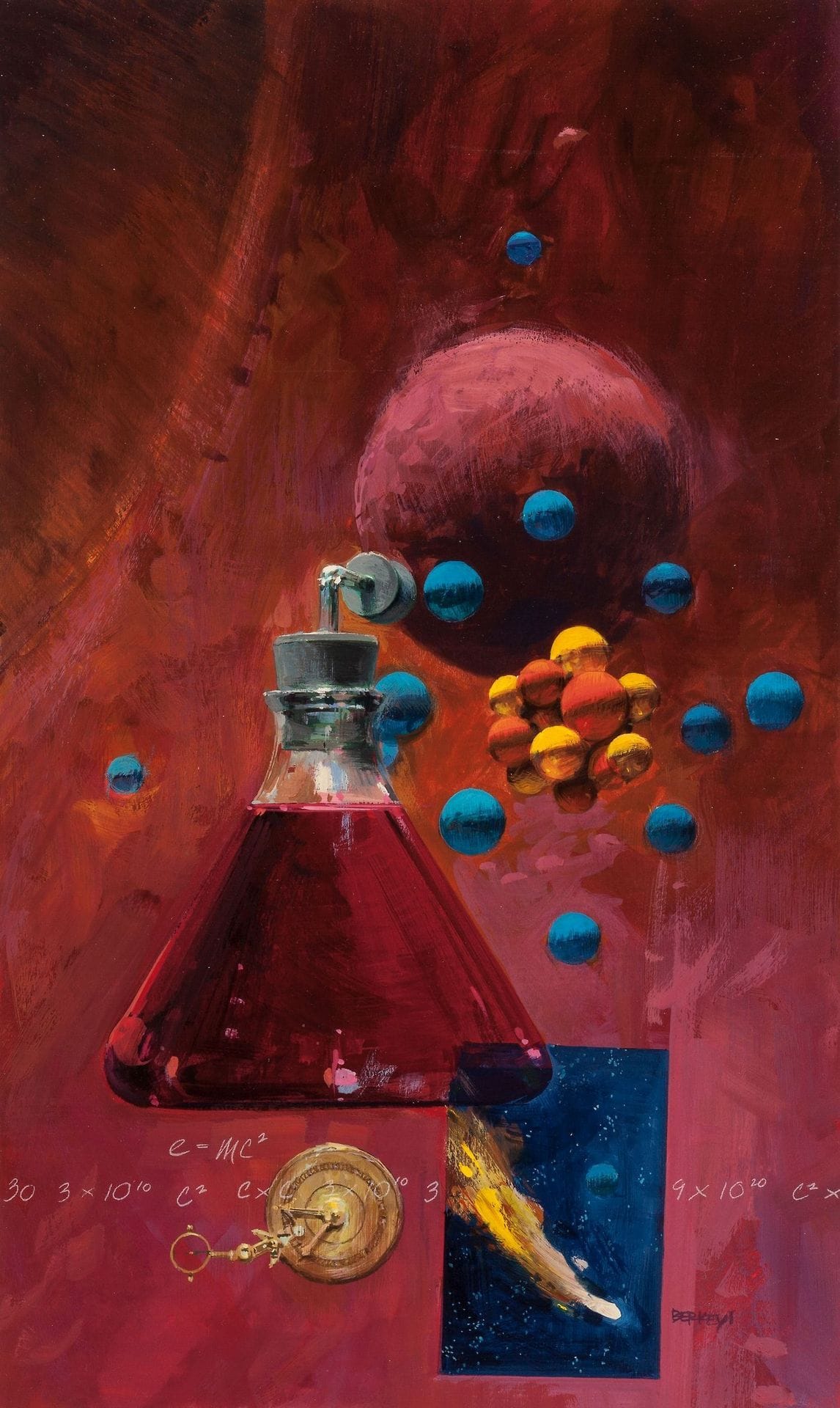
Robert Abbett threw a flask into this very red illustration from 1963 of scientists battling supersized pests – I couldn't find the exact cover, but I assume this is for a paperback edition of H. G. Wells's The Food of the Gods and How It Came to Earth, since it's labelled "Food of the Gods" in this blog post.
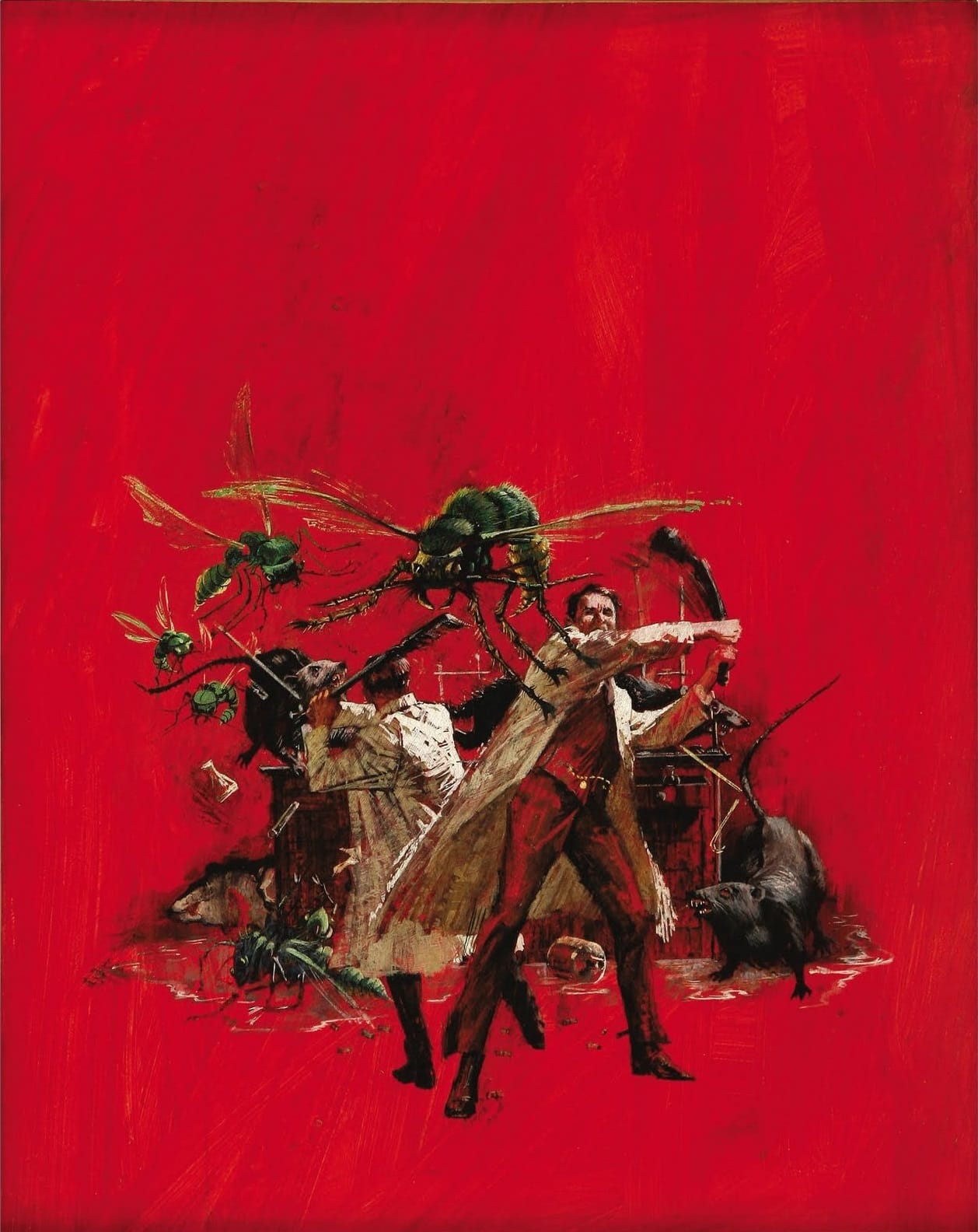
Flasks didn't turn up on fantasy covers very often – even wizards typically opt for the even-more-old-school mortar and pestle. They are prominent on one of my favorite D&D illustrations ever, though: Jeff Easley's 1986 cover art to the AD&D supplement Unearthed Arcana.
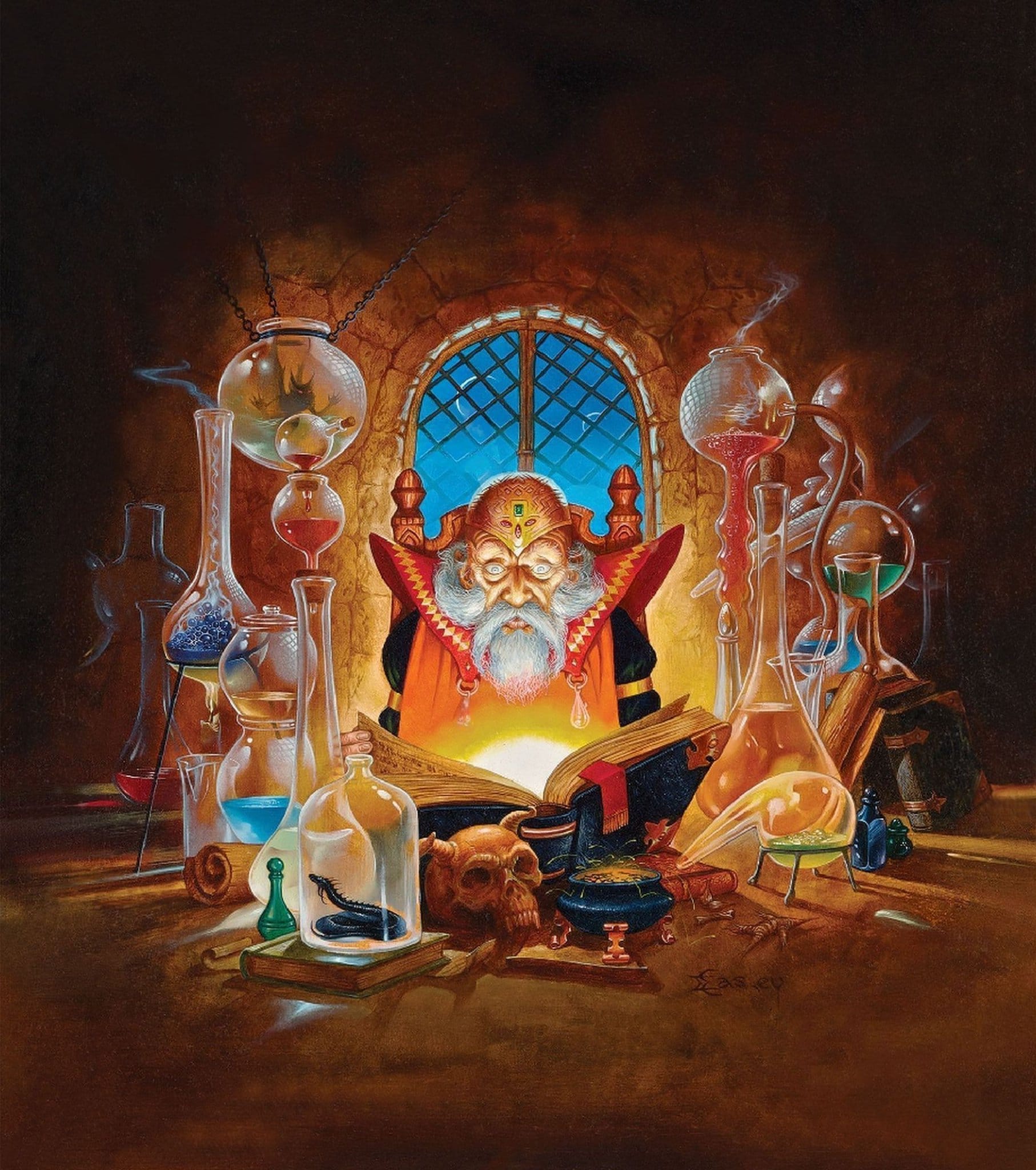
Next Time: The Peter Max Astrologicalendar